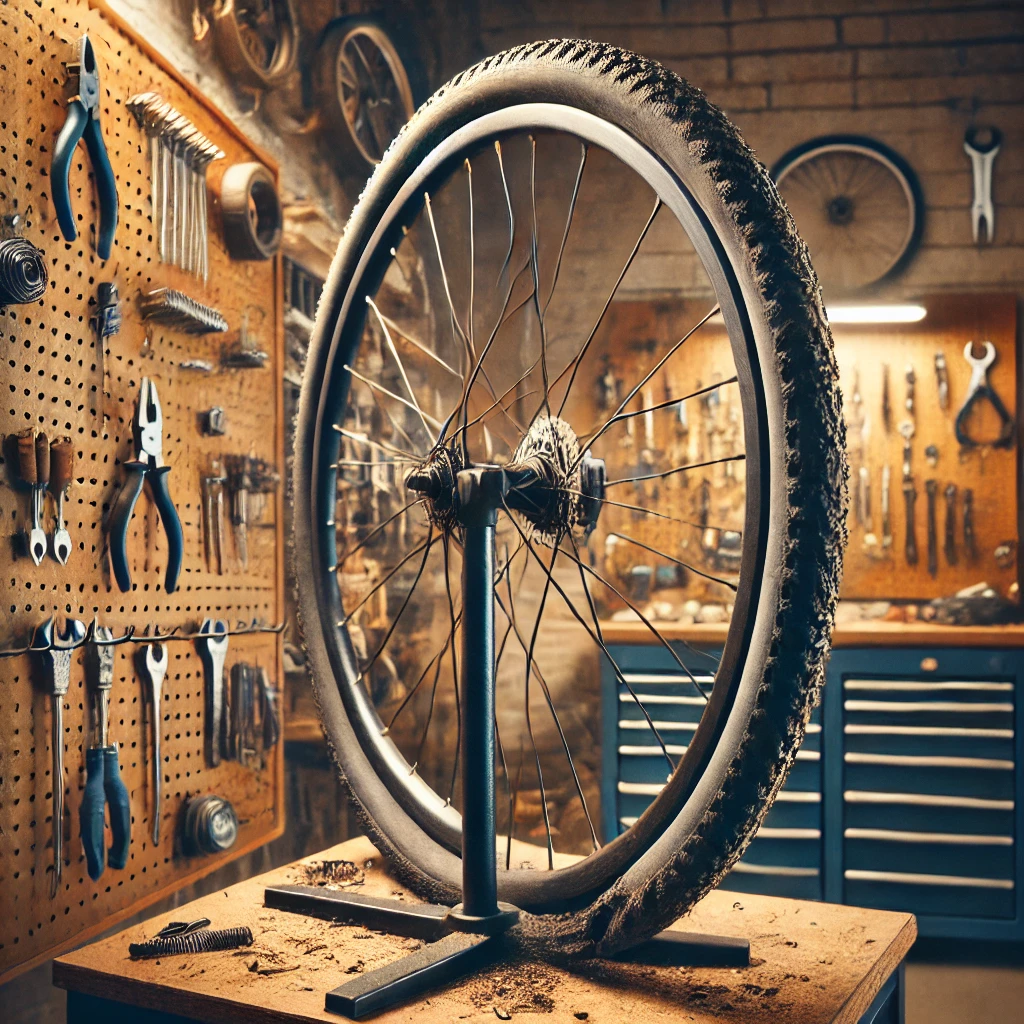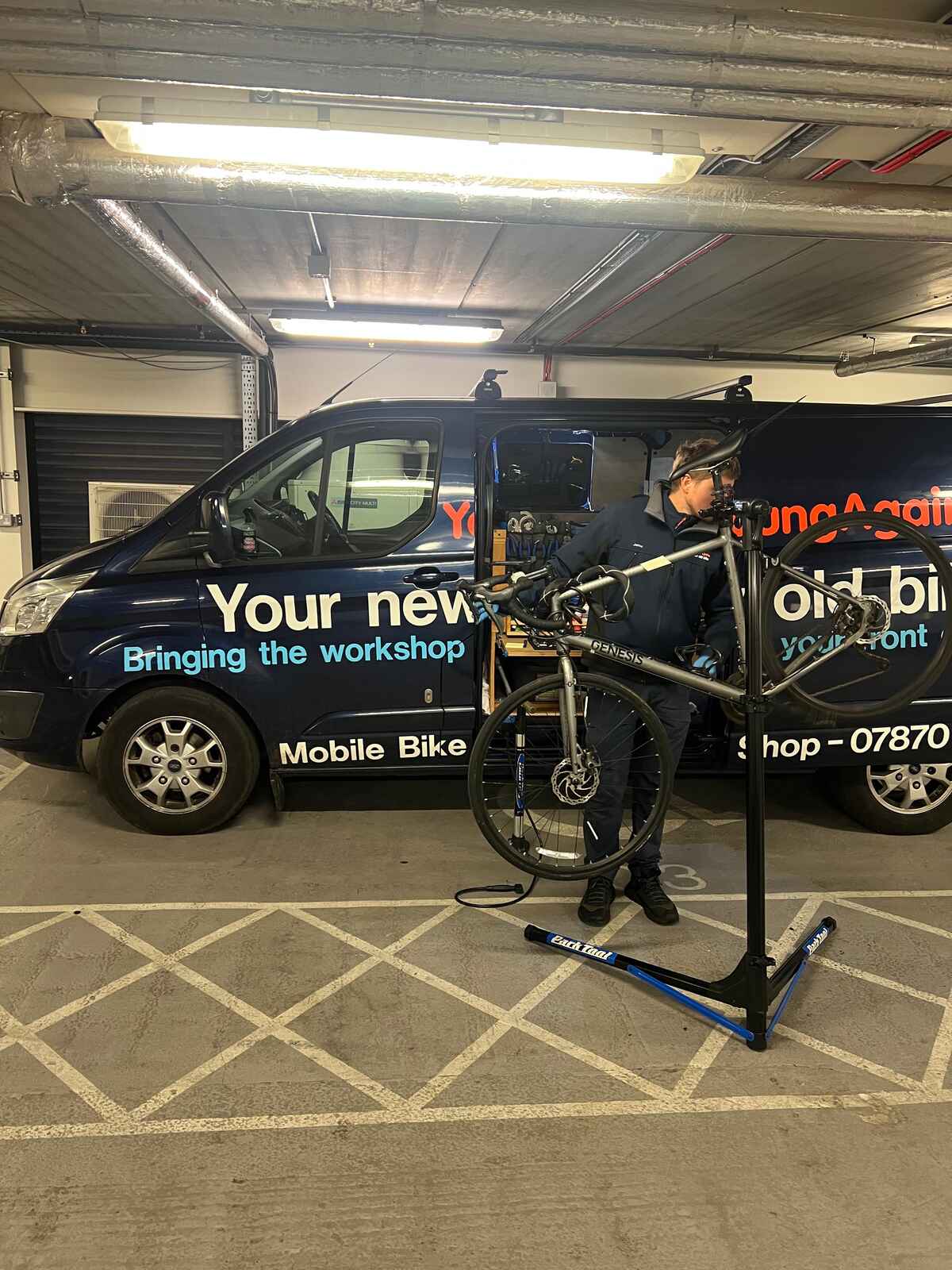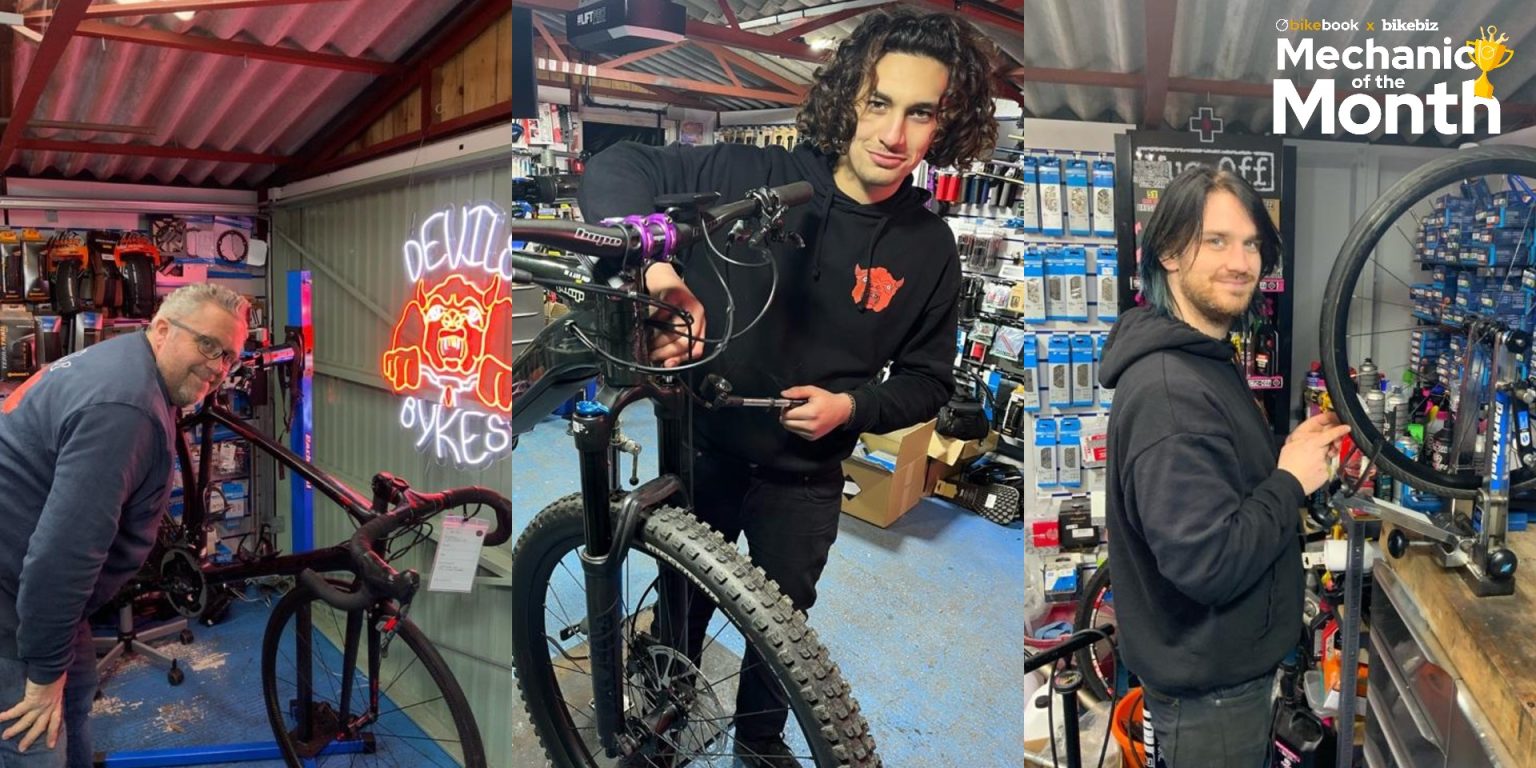December 19, 2025
•
8 minute read
How to Fix a Buckled Bike Wheel
You've just finished an exhilarating ride, only to notice your bike wheel isn't quite right. There's a wobble. The dreaded buckle! It's more than just a nuisance; a buckled wheel can impact your ride quality and safety.
Jake Fieldsend
Founder & CFO
You've just finished an exhilarating ride, only to notice your bike wheel isn't quite right. There's a wobble. The dreaded buckle! It's more than just a nuisance; a buckled wheel can impact your ride quality and safety. But don't worry, you're not alone, and fixing it isn't as daunting as it seems. This guide will help you understand why wheels buckle and show you how to remedy the issue yourself, ensuring your rides remain smooth and secure.
1. Understanding a Buckled Bike Wheel
1.1 What Causes a Wheel to Buckle?
A wheel can buckle for a myriad of reasons, and understanding these can help you prevent future occurrences. Impact damage is the most common culprit; hitting a pothole or kerb with force can warp the rim. Then there's spoke tension — uneven tension can gradually warp the wheel's shape over time. Even weather conditions and improper storage might play a part: humidity and temperature fluctuations can affect wheel tension subtly but significantly.
Consider the maintenance angle, too. A bike that hasn't been serviced in ages is more prone to buckling. Regular checks and adjustements are crucial. Weight distribution also plays a role; carrying heavy loads repeatedly can stress the front wheel, leading to buckling.
Pro-tip: Check your wheel alignment and spoke tension regularly, especially after rides on rough terrains.
1.2 Signs Your Bike Wheel is Buckled
Detecting a buckled wheel early can save you from costly repairs. Look out for these tell-tale signs:
- Wobbling: If the wheel wobbles side-to-side as you ride, that's a classic sign.
- Brake Rub: When your brakes consistently contact the rim without pulling the levers, it suggests a buckle.
- Noise: Creaking or clicking sounds can be indicative of uneven spoke tension.
You might also notice an uneven tyre wear pattern or increased rolling resistance during rides. Ignoring these signs can exacerbate the wheel's buckle, leading to more significant alignment issues and a harsher riding experience.
Pro-tip: Place your bike upside-down, spin the wheel, and observe from the fork or frame's perspective. Any wobbling or misalignment indicates a buckle.
1.3 The Importance of Fixing a Buckled Wheel
Fixing a buckled wheel isn't just about aesthetics or minor inconvenience—it greatly affects your bike's performance and safety. A compromised wheel can lead to an unstable ride, reducing control and increasing the risk of accidents. This can be especially hazardous at high speeds or on uneven trails.
Moreover, a buckled wheel puts extra stress on the bike’s components, potentially causing additional and costly damage over time. Maintaining a straight wheel also extends the life of your tyres, as a misaligned wheel can cause uneven tyre wear.
Pro-tip: Addressing a wheel tension issue early can prevent further damage to the rim, spokes, and even the frame of your bicycle.
2. How to Fix a Buckled Bike Wheel Yourself
2.1 Tools You Will Need
To fix a buckled bike wheel, you'll need a few essential tools. The primary tool is a spoke key, which is crucial for adjusting the tension of the spokes. Investing in a high-quality spoke key can make a significant difference in the ease and accuracy of your adjustments. Other useful tools include a truing stand to help keep the wheel steady and gauge the extent of the buckle. If you don’t own a truing stand, you can flip your bike upside down and use the bike frame as a guide.
- Tyre levers: Remove the tyre from the rim to access the spokes easily.
- Ruler or indicator: To measure the alignment of the wheel.
- Lubricant: Applying a small amount can prevent damage to the spokes' nipples during tightening or loosening.
Organising your tools before starting will streamline the process, potentially saving you time and effort. As a rule, ensuring your toolbox is well-stocked is always beneficial, not just for fixing a buckled wheel but for general bike maintenance.
2.2 Step-by-Step Guide to Fixing the Wheel
Before diving into fixing a buckled wheel, remove the wheel from the bike. Then, remove the tyre and tube if you're using a truing stand for best results. Here’s a straightforward guide to help you get the job done:
- Identify the Buckle: Check the wheel for deviation. Spin it slowly and look for areas that wobble or make contact with your indicator.
- Adjust Spoke Tension: Use the spoke key to tension the loose spokes on the buckled side and loosen the opposite side if tension is uneven. Only do half-turn increments to avoid over-adjusting.
- Re-check Alignment: Rotate the wheel and observe the changes. Make further adjustments if needed.
- Check for Roundness: Spin the wheel again and use your indicator to assess roundness. Adjust spoke tension as needed.
- Final Check: Continue the previous steps until the wheel spins smoothly without noticeable wobbles or touching the frame.
Being diligent and patient with each adjustment will lead to a better outcome. Adjusting spoke tension minimally and incrementally is key to avoiding making the buckle worse.
2.3 When to Seek Professional Help
While it's entirely possible to fix a buckled wheel yourself, there are times when seeking professional help is prudent. If you notice that adjustments don’t improve the wheel alignment, or if there's significant damage like bent or broken spokes, a professional mechanic can provide expert insight and repairs. Rather than spending money on a new wheel prematurely, consult with a professional to see if repair is feasible.
Utilising platforms like Bikebook can effortlessly connect you to local mechanics. Enter your postcode, choose from thousands of skilled bike mechanics, and book a service. This saves time and ensures your bike receives quality attention without the hassle of searching endlessly on your own. Also, reading real reviews from other cyclists will assure you that your bike is in capable hands.
Pro Tip: Regularly check your bike wheels for alignment issues before they become more severe. Implementing these small maintenance checks can save you the hassle of major repairs down the road.
3. Finding the Right Help
3.1 Using Bikebook to Find a Local Mechanic
Looking for a local bike mechanic? Bikebook makes this task simple. Instead of wasting time and energy sifting through pages of search results when you type ‘bike service near me’, you can use Bikebook's intuitive platform to find local professionals at the push of a button. Simply enter your postcode, and let Bikebook match you with highly qualified mechanics nearby. This means you can spend less time searching and more time riding.
Bikebook focuses on connecting you with local, independent mechanics, which can save you both money and time. Supporting local professionals not only helps their businesses thrive but also ensures your bike gets the attention it needs from someone who understands local conditions. Find mechanics that fit your budget and service needs with straightforward comparisons and real cyclist reviews at your fingertips.
Pro-tip: Save this page to your bookmarks, so the next time you need a quick and reliable bike repair, you can access it straight away.
3.2 The Benefits of Choosing a Local Mechanic Through Bikebook
With Bikebook, choosing a local mechanic is packed with benefits. By keeping services within the community, you're helping support local businesses and creating more personal connections in your neighbourhood. When you choose local, you’re more likely to receive tailored advice based on regional riding conditions.
Additionally, Bikebook ensures transparency by providing access to real customer reviews. These insights can guide you in selecting a mechanic whose expertise and approach match your preferences. Plus, all mechanics listed are verified, ensuring reliable service every time. As a bonus, Bikebook's service is completely free for users, providing an affordable way to keep your bike in top condition without hidden fees.
3.3 Booking Your Repair with Confidence
With Bikebook, booking a repair is straightforward and reliable. Once you’ve used the platform to find the right mechanic, you can schedule your repair by selecting a convenient time and any additional services you might need. The chosen mechanic will promptly contact you to arrange the final details, ensuring the process is smooth from start to finish.
By having a network of local, verified professionals, Bikebook takes the guesswork out of choosing a reliable service. There’s no need to worry about the quality of service — you can focus instead on getting back on the road with a bike that functions perfectly. Whether a simple tune-up or a more involved repair, knowing that your bicycle is in expert hands brings peace of mind to your cycling adventures.
Need help finding a local bike mechanic you can trust? Explore Bikebook's services today here.
In conclusion, fixing a buckled bike wheel is a rewarding skill that offers cyclists greater independence and confidence. From identifying the cause and understanding its impact to following a step-by-step repair guide, this knowledge empowers cyclists to maintain their wheels for a smoother ride. For more persistent issues and when professional help is warranted, tools like Bikebook simplify the search, making it easy to connect with skilled local mechanics. Whether you choose to DIY or seek professional assistance, a straight and true wheel will significantly enhance your cycling experience.



